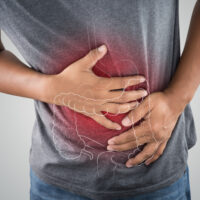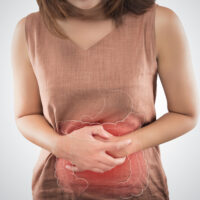A comprehensive cheat sheet for successfully renting a storage unit
Moving to a new place or downsizing the size of your house can be a tedious task. The process becomes tougher if you are in the midst of the moving process and need to temporarily store your precious belongings someplace else. Asking a friend or relative to store your belongings might not be a comfortable option for you.

You can think of the storage facility as your landlord. The only difference here is that you have to deal with this “landlord” once or twice when you sign up and move your possessions. As long as you adhere to the contract and pay your rent on time, you have the storage unit all to yourself. However, choosing a reliable, reasonable storage facility is not an easy task. There are several factors you need to consider before you decide to trust the company with your belongings. It is easy to get swayed by low prices, but there are other factors involved as well. It is essential to consider the options with due diligence as you will be entrusting the storage company with your precious belongings. Which is why you will need all the help you can get, especially if you are a novice at this. Rest assured, as help is on its way. This will ensure that you are up-to-date with all the parameters of making the right choice.
The two major types of storage options
Before you decide on renting a storage space, it is sensible to explore the various options at hand. There are two major types of storage options, and they are:
- Full-service storage: In this type of storage option, the storage company will offer “valet-style” services to you. Everything, right from picking up your belongings to ensuring that they safely reach the storage unit, is managed by the storage company. Top full-service storage providers even let their customers pick the date and time for moving their belongings. The customers can request and schedule the pick-up or return as per their convenience. Full-service storage options are fast gaining popularity as they save the customer from a great deal of hassle. Moreover, all the belongings will be delivered safely to the storage unit. These service providers even take pictures of the storage unit and document your belongings. So, even if you don’t remember which items were moved into the storage unit, the photos will prove helpful. In such cases, checking your online inventory list will also reveal the contents of the storage unit.
- Self-storage: Self-storage units are, undoubtedly, the most popular storage unit option among the general public. Though people have to undertake the major responsibilities, the affordable rent structure makes it a feasible option. Such facilities offer a safe, secure, and inexpensive way of storing your extra personal belongings; you can store your furniture or other large items. Self-storage unit providers spell it out clearly to the customers that they have to move their belongings to the storage unit on their own. Moreover, if they wish to pick an item from the storage, they have to do so themselves. In fact, even documenting the belongings is the customer’s responsibility.
Full-service vs. self-storage: What a dilemma!
This is a tough call as both types of storage services have their own perks. Usually, customers opt for self-storage as it is affordable and easier to use. They prefer transporting their own belongings. This allows them the luxury to decide the time and day convenient for dropping off their belongings in the storage unit. So, if you have complete access to a car and aren’t planning on storing a lot of things, you can consider opting for the self-storage unit.
However, self-storage is not always a viable option for those living in large urban areas as driving and parking can be an issue. In such cases, opting for a full-service storage provider is a sensible move. Also, for city-dwellers who stay in apartments with elevators or stairs, full-service storage services come in handy. They’ll help you move and handle all your belongings with care. In such cases, you will be relieved as the vital responsibility of moving and dropping off your belongings is done by the company.
Steel or wooden storage units: Which should I choose?
Most storage units are made either of steel or wood. However, opting for steel-framed storage units is hands down the most popular choice. In addition to being sturdy, steel storage units are the most weatherproof type of storage pod. If you decide to opt for an outdoor storage unit, it is advisable to choose a metal storage unit for obvious reasons. However, if your budget doesn’t permit renting a steel storage unit, you still have the option of choosing a wood storage unit with a waterproof covering on top.
Finding a storage unit near you is easy-peasy
Finding a reliable storage unit provider can be an overwhelming task, especially if you are doing it for the first time. Fret not as there are thousands of good storage unit facilities located throughout the country. You can find the nearest storage unit facility near you by using the store locators on the Internet. All you have to do is type in your zip code or your city and state of residence, and hit the “find storage” button. The store locator will pull up quotes from the storage unit facility near your location. All you have to do is compare the quotes and read their contract diligently. Some of the popular storage facilities include Extra Space Storage, Public Storage, CubeSmart, and U-Haul.
Choosing the right-sized storage unit is necessary
There are three types of storage unit sizes: small storage units, medium storage units, and large storage units.
- Small storage units: The small storage units are sized 5’x5’ and 5’x10’. The 5’x5’ units are the size of a small walk-in closet and are meant for storing personal items, clothes, boxes, skis, small furniture, children’s toys. The 5’x10’ units are meant for small furniture, sofas, chairs, box spring and mattress, chest of drawers, business supplies and records, and small items and boxes.
- Medium storage units: There are two types of medium storage units — 7.5’x10’ units and 10’x10’ units. The 7.5’x10’ storage units can store furniture and other items that 5’x10’ units can store, and the 10’x10’ storage units can unit store the contents of a one-bedroom apartment along with all major appliances, boxed items, furniture, and other supplies.
- Large storage units: There are three variants available if you opt for large storage units: 10’x15’ units, 10’x20’ units, and 10’x30’ units. The 10’x15’ units will allow you to store items of a two-bedroom apartment along with the appliances, furniture, boxed items, and supplies. If you opt for the 10’x20’ storage unit, you can store the contents of a three-bedroom apartment along with all its contents. The 10’x30’ storage unit is the largest storage unit you will come across. Such storage units can hold the contents of a four-to-five bedroom home along with all the home appliances. Moreover, these storage units are even used for storing commercial equipment as well.
Now that you are acquainted with the differently sized storage units, it becomes easier for you to make a decision. You will have to base your decision on the basis of which items you wish to store.
Key features of the ideal storage unit
Before you decide on a particular storage unit provider, you need a checklist to ensure that you are making the right decision. There are several factors that need to be crossed off the list before you sign the dotted line. Storage units are equipped with certain features and the best ones will offer almost each one of these to their customers. So, look for these key features while looking for a storage unit near you.
- Degree of accessibility
- Number of locks
- Climate control
- Video monitoring
- In-person surveillance
- Sizes offered
- Overall safety and the security of the facility
In addition to these essential features, another factor that vouches for the storage facility’s credibility is the reviews it received online. To determine whether a particular storage unit facility is the right one for you, visit online consumer forums. The reviews are mostly accurate and will help you make the right call.
Dos and don’ts for storing items
Though you will be paying for the entire storage unit, you shouldn’t stuff it with all your belongings. There are certain items that shouldn’t be stored in storage units. It is dangerous to store flammable items like fireworks, chemicals, fertilizers, paint, narcotics, gasoline, and propane tanks. Also, it is advisable to not use the storage units for perishable items like food, medicines, and plants. It is essential that you familiarize yourself with the various rules and regulations of the storage facility before loading up the unit. Usually, the storage facility provides its customers with a list of items that they can and cannot store in the storage unit.
Chalking out money matters
Price is one of the major determining factors in your quest to find the right storage unit. According to the online storage marketplace SpareFoot, the average monthly price of all unit sizes is $87.15 a month. This amount is calculated considering the average price per square foot to be $0.97. However, there are several other factors that affect the rent of the storage space. They are:
- Location: Like every other piece of real estate, the rent of the storage spaces varies according to their location. Those living in large urban areas might find the storage facilities to be more expensive than the ones on the outskirts of the city. If you aren’t keen on paying a lot of money on renting a storage unit, then try opting for storage facilities in a nearby suburb.
- Time: The amount of time you will be renting the storage place also determines the overall price. Usually, self-storage facilities are more flexible when it comes to allocating storage spaces; they even allow you to store your belongings for a week! Whereas, with full-service storage facilities, the rentals will be leased out on a monthly basis.
- Size of the storage unit: As established earlier, the number of items you wish to store will determine the size of the storage unit best suited for you. However, even the storage size has a major role in deciding the rent of the storage space. It is common knowledge that the bigger the storage space, the higher the monthly cost. So, it is essential to determine which items go into the storage facility as this will be the deciding factor here.
- Services offered: Self-service storage facilities are cheaper than full-service storage facilities. As full-service storage facilities take the entire responsibility of moving your belongings and storing it, you will be shelling out more money.
- Essential features: If you wish to store items that can succumb to extreme temperature, you will have to opt for climate-controlled storage units. Such storage units cost 15 percent more than the regular ones. Also, if you wish to access your storage unit any time of the day, you will have to find 24/7 storage unit facilities near you. Such storage facilities charge more money than the ones that offer limited access. Also, if you are using the storage unit for storing valuable items, you will need to consider a storage facility that offers impeccable security features. However, even if the storage facility is completely secure, there are chances of a break-in. Which is why most storage facilities require the customer to have insurance. It is a sensible decision to insure your items as it comes in handy while replacing broken or stolen items. However, you need to check the policies of the storage facilities as some of them offer protection for items against damage or loss, free of charge. Your preferences for certain features in the particular storage unit will play a major role in determining the rent.
Inquire for rental specials and discounts
A cardinal rule to follow when you are out shopping for anything is to always try bargaining or look for discounts. This is applicable to your storage unit as well. Before you decide on the final figure, you should inquire whether the storage facility offers any rental specials or discounts. Usually, storage companies offer the first month free or for $1! However, it is essential to read the contract carefully as the meager rent might lock you into a 3- or 6- month deal.
Pay attention to the gate and office hours
When you finally find the right storage facility, compare the gate and office hours. It is a common practice for storage facilities to post only their gate hours. This is done with the intention of making people think that their storage facility is open beyond office hours. However, there’s a catch here; the gate hours are usually the hours in which you can access your storage unit, but the office hours are shorter. Longer gate hours are suitable for those who wish to have more flexible access to their storage units. However, if you wish to speak to someone for addressing any issue, you can do that only during the office hours. So, ensure that you check the gate and office hours before you finalize the deal. It is essential to have reasonable access to your storage unit and subsequent assistance from the office staff.
Choosing the right storage unit is indispensable to your desire to keep your belongings safe. Moreover, you shouldn’t compromise on the security and other features for saving money. In fact, doing so might actually turn into a costly affair if your belongings break or are stolen. Since you are a part of the technologically-inclined 21st century, you will have access to all the information pertaining to your task of locating the best storage unit facility near you. Also, while you are at it, some security measures from your end can never go waste. So, go ahead, consider spending money on a strong lock. At the end of the day, your quest for the perfect storage unit is guided by the desire for peace of mind. And, this will surely help you attain it.
Tags- Storage Units, storage units near me, monthly storage units near me, storage units near my location, 24hr storage units near me





